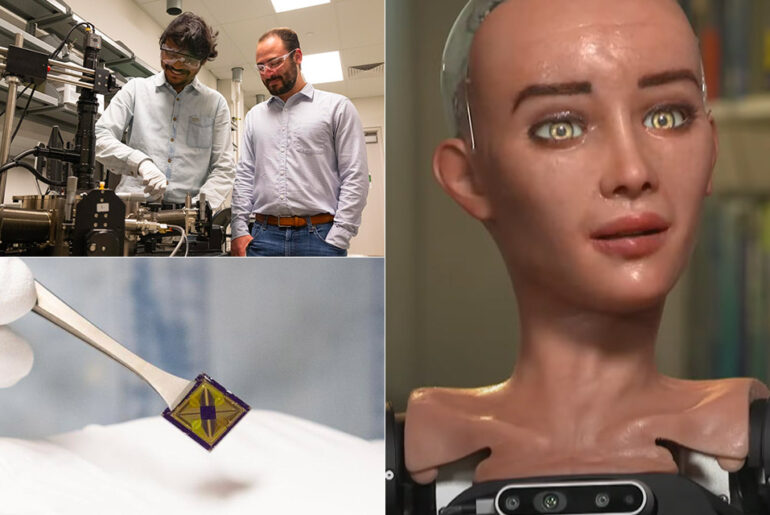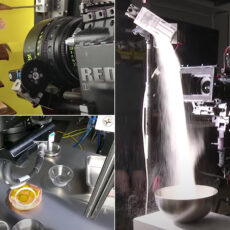
Photo credit: Das Research Lab/Penn State
Penn State researchers have developed an innovative electronic tongue that could help AI-powered robots taste and crave foods in the future. This is accomplished by mimicking how taste influences what humans eat based on both needs and wants.
The human tongue has taste receptors that convert chemical data into electrical impulses. This electronic tongue uses a simplified biomimetic version of this process, including an electronic “gustatory cortex” made with 2D materials. Artificial taste buds, comprised of tiny, graphene-based electronic sensors called chemitransistors, are capable of detecting gas or chemical molecules. Memtransistors, which make up the other circuit, remembers past signals, made with molybdenum disulfide. These two components enabled researchers to design an “electronic gustatory cortex” connected to a physiology-drive “hunger neuron,” psychology-driven “appetite neuron” and a “feeding circuit.”
- LESS FAT: Now enjoy guilt-free food. Air fry with up to 75% less fat than traditional frying methods. Tested against hand-cut, deep-fried French...
- WIDE TEMPERATURE RANGE: 105°F-400°F allows you to gently remove moisture from foods or quickly cook and crisp foods with convection heat.
- FAMILY-SIZED CAPACITY: 4-quart ceramic-coated nonstick basket and crisper plate fit 2 lbs of French fries.
The main focus of our work was how could we bring the emotional part of intelligence to AI. Emotion is a broad field and many researchers study psychology; however, for computer engineers, mathematical models and diverse data sets are essential for design purposes. Human behavior is easy to observe but difficult to measure and that makes it difficult to replicate in a robot and make it emotionally intelligent,” said Saptarshi Das, associate professor of engineering science and mechanics at Penn State.










